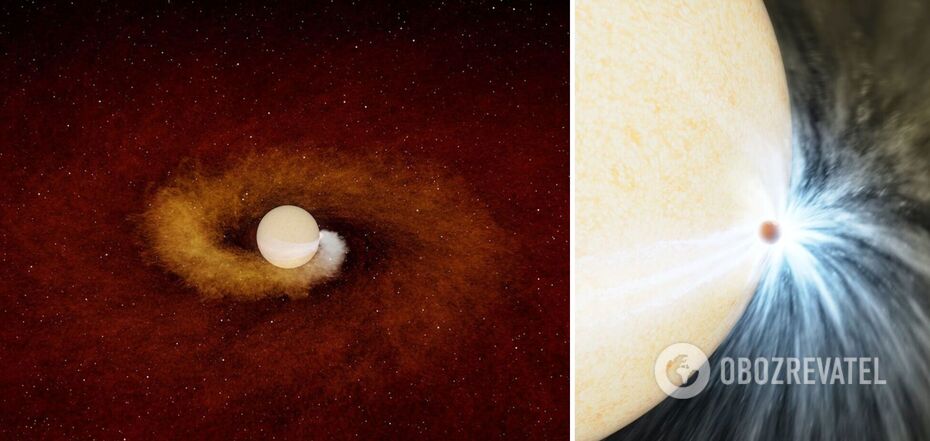Life
Astronomers see the Earth's hellish future live for the first time: this is not a fate to be envied
For the first time in the history of space observations, astronomers have seen a star approaching death swell and swallow a neighbouring planet the size of Jupiter. A similar fate may await our Earth when the Sun goes through a similar process.
Scientists reported on the observation in a study published in the journal Nature. The spectacle, officially named ZTF SLRN-2020, was made possible by a ground-based observatory and the NASA NEOWISE spacecraft. This spacecraft has an archive of space events that actually allows scientists to see what they missed.
The metamorphosis of the star began when its core ran out of fuel. As a result, it began to grow in size, each time approaching a neighbouring planet, which it eventually swallowed completely.
Scientists estimate that the swallowed planet was the size of Jupiter (the largest planet in the Solar System) and was in an extremely close orbit of its star, which is now in the red giant phase. This is the last phase of a star's existence before it dies, which, however, can take more than 100,000 years.
Scientists have known for a long time that red giants are capable of swallowing planets, but this is the first time the process has been seen live.
"This type of event has been predicted for decades, but we've never seen it happen before," said Kishalay De, an astronomer at the Massachusetts Institute of Technology in Cambridge and lead author of the study.
The scientists said that the approach of the star slowed down the planet's movement in orbit, and in its last moments it fell into the star, like a meteor burning in the Earth's atmosphere. After absorbing so much energy, the star not only increased in size but also became hundreds of times brighter.
Observing the aftermath of the event, scientists were able to see dust, which, in their opinion, indicates that the planet did not die without a fight. In its last moments, it was pulling hot gas away from the surface of the loose star. It was this gas that was torn away from the star and cooled in space, turning into dust.
In about 5 billion years, the Earth's Sun will also reach the age when it burns all its internal fuel and turns into a red giant, growing 100 times larger. Scientists assume that as it grows, the Sun will swallow Mercury, Venus, and possibly the Earth.
However, De believes that our Sun will not make such a spectacular show.
"If I were an observer looking at the solar system in 5 billion years, I would probably see the Sun a little brighter, but nothing as dramatic as it is now, although the physics would work the same way," he said.
Earlier, OBOZREVATEL also told what will happen when the Milky Way crashes into Andromeda.
Subscribe to OBOZREVATEL's Telegram and Viber channels to keep up with the latest news.




























